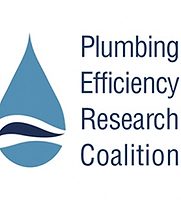PERC releases Drainline Transport Report Phase 2.1 Supplement

The Plumbing Efficiency Research Coalition has released the Phase 2.1 supplemental report on the drainline transport of solid waste in building drains. The study builds on the findings of the Phase 2.0 report from additional work the coalition was able to conduct using remaining funds carried over from the PERC 2.0 research study.
The Phase 2.1 supplemental report focuses on two previously unaddressed areas of study: the implications surrounding dual flush toilet discharge patterns, comparing results to single volume flush toilets of comparable flush volume; and the impact of drainline slope deviations on the transport of solid waste.
The Drainline Transport of Solid Waste in Buildings – Phase 2.0 was originally released in September 2015. The PERC 2.1 findings appear as a new appendix to the PERC 2.0 report.
"Water conservation and efficiency continue to drive many of the recent code changes in the International Plumbing Code," said Lee Clifton, director of PMG Resources for the International Code Council, which is a member of the coalition. "Recent events such as the Flint, Mich., water crisis and the severe drought in the western United States are shinning the spotlight on a growing global issue."
PERC identified drainline transport as its first research project when it was formed in 2009 to support the development of water efficiency and sustainable plumbing products, systems, and practices. PERC’s member organizations are represented by Fred Grable of the Code Council; Mary Ann Dickinson, Alliance for Water Efficiency; Billy Smith, American Society of Plumbing Engineers, Peter DeMarco, International Association of Plumbing and Mechanical Officials; Gerry Kennedy, Plumbing-Heating-Cooling Contractors National Association; and Barbara C. Higgens, Plumbing Manufacturers International.




